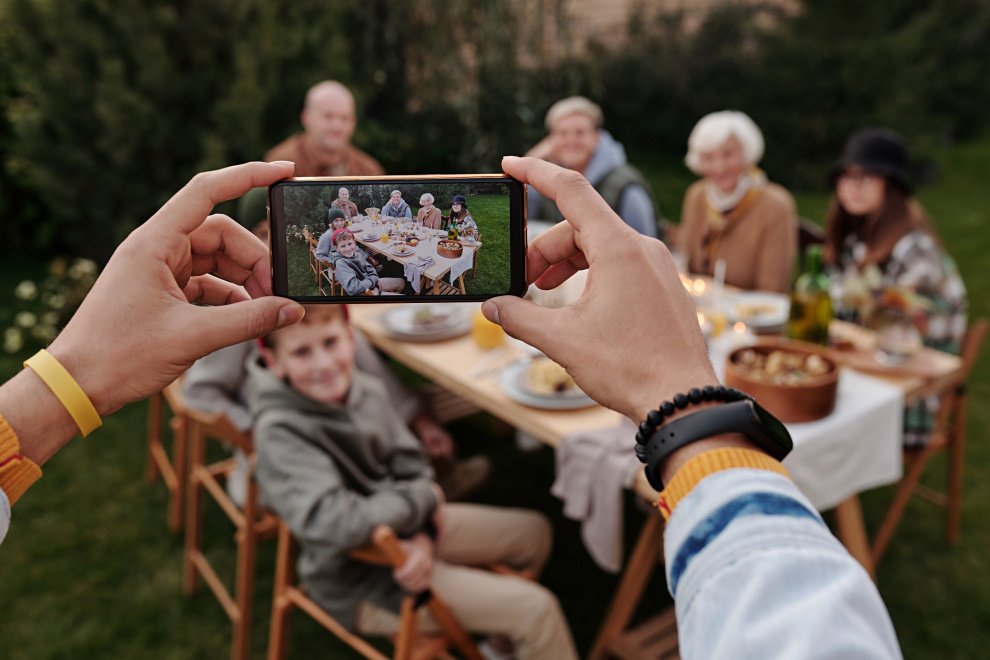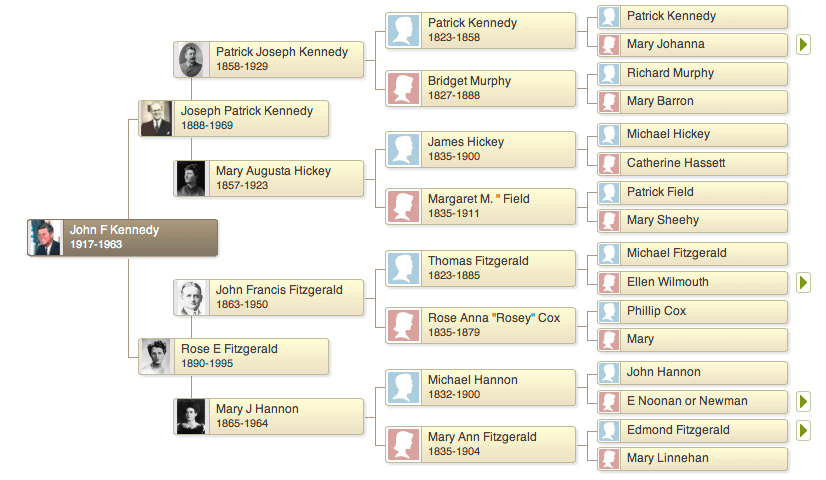UNDERSTANDING FAMILY RELATIONSHIPS
PART 1
 March 28, 2023
March 28, 2023
Genealogy and DNA research requires an understanding of family relationships. By that I mean, what is a first cousin, second cousin, half cousin, removed cousin, etc. This can get overwhelming, so let's start with some very basic information. You should already know most of this, but we have to start somewhere. I am leaving out a lot here to keep it simple. I'll get into more complex relationships later.
CLOSE FAMILY MEMBERS
We all know what parents, grandparents, aunts, uncles, and siblings are. Something you may not have thought about is, with each generation, you are related to more and more families. Twice as many in fact. For example, everyone has two parents, four grandparents, eight great-grandparents and sixteen great-great grandparents. Notice, with each generation, the number of families you're related to doubles. There's a reason I'm mentioning this. I'll get into it more in a future post. For now, let's just make sure you have an understanding of some simple relationships...
FIRST COUSINS
A first cousin is someone who has two grandparents in common with you. Another way to think of that is, one of your parents will be a full sibling of one of their parents. Easy enough, right? Something worth mentioning here is, for someone to be a first cousin, second cousin, third cousin, etc., they need to be in the same generation as you. For example, don't refer to your first cousin's child as your "first cousin." They are actually a "first cousin once removed." The same is true of your parent's cousins. they are also called, "once removed." We'll get more into that in my next post. For now, just remember, all the cousin examples below are referring to people in the same generation as you.
SECOND COUSINS
This is where some people's understanding of family relationships ends. Many people have no idea what a second cousin is. Why? Probably because they have never met their second cousins. In my case, I've met my second cousins, but have only seen them at family reunions. Someone who has two GREAT-grandparents in common with you is your second cousin. Another way to think of that is, one of your grandparents is a sibling of one of their grandparents.
THIRD COUSINS AND BEYOND
Someone who has two GREAT-GREAT-grandparents in common with you is your third cousin. Another way to think of that is, one of your great-grandparents is a sibling of one of their great-grandparents. This same pattern continues forever. A fourth cousin will have two great-great-great-grandparents in common with you. Each generation adds a "great."
OTHER RELATIONSHIPS
The relationships mentioned above are as easy as it gets. There many more relationships that can make things very complex, like "half" relationships and "removed cousins," unusual situations, such as "double cousins" and other things you may never have heard of. I once helped a guy whose grandfather had children with BOTH of his grandmothers. You don't see that happen every day. It created some weird relationships and the DNA numbers were quite tricky. I remember a "double uncle" DNA match. These things are rare, but they do happen. Things can also get pretty crazy if you're parents or grandparents are related. Marrying a first or second cousin did happen more often in the old days.
FAMILY VIEW VS. PEDIGREE VIEW
Before getting into more complex relationships, it's important to understand who you get your DNA from. If you're using Ancestry.com, you'll have the option to view family trees in two different views. I rarely use "family view" which shows every person in the tree. The image below is a "pedigree view" (also called horizontal view) of president John F. Kennedy's family. This view shows only the people who he gets DNA from. It doesn't show aunts, uncles, cousins, siblings, step-parents, etc. The people you get DNA from are only your parents, grandparents, great-grandparents, great-great-grandparents, and more distant grandparents. As I mentioned earlier, with each generation the number of families you're related to doubles. You can see he has two parents, four grandparents, eight great-grandparents and sixteen great-great grandparents.

When doing this kind of research, it's important to visualize families in this way. I often find problems in people's trees and have to narrow down which family line has the problem. Hopefully your DNA matches will have trees made. Remember, when figuring out your relationship to a DNA match, you'll want to see who are the closest common ancestors. For example, look at JFK's tree. If your family tree had Michael Hannon and Mary Ann Fitzgerald as your great-grandparents, and no other closer ancestors in common, your relationship to JFK would be... Can you guess?... Second cousin. How about this... What if your great-grand-mother was Bridget Murphy's sister? If that were true, you'd have two great-great-grandparents in common with JFK. You would be his third cousin. Again, we've only covered simple relationships here. Figuring out your family can get much more difficult as you learn about relationships in different generations and how DNA numbers work.
Next, we'll look at some more complex relationships.

